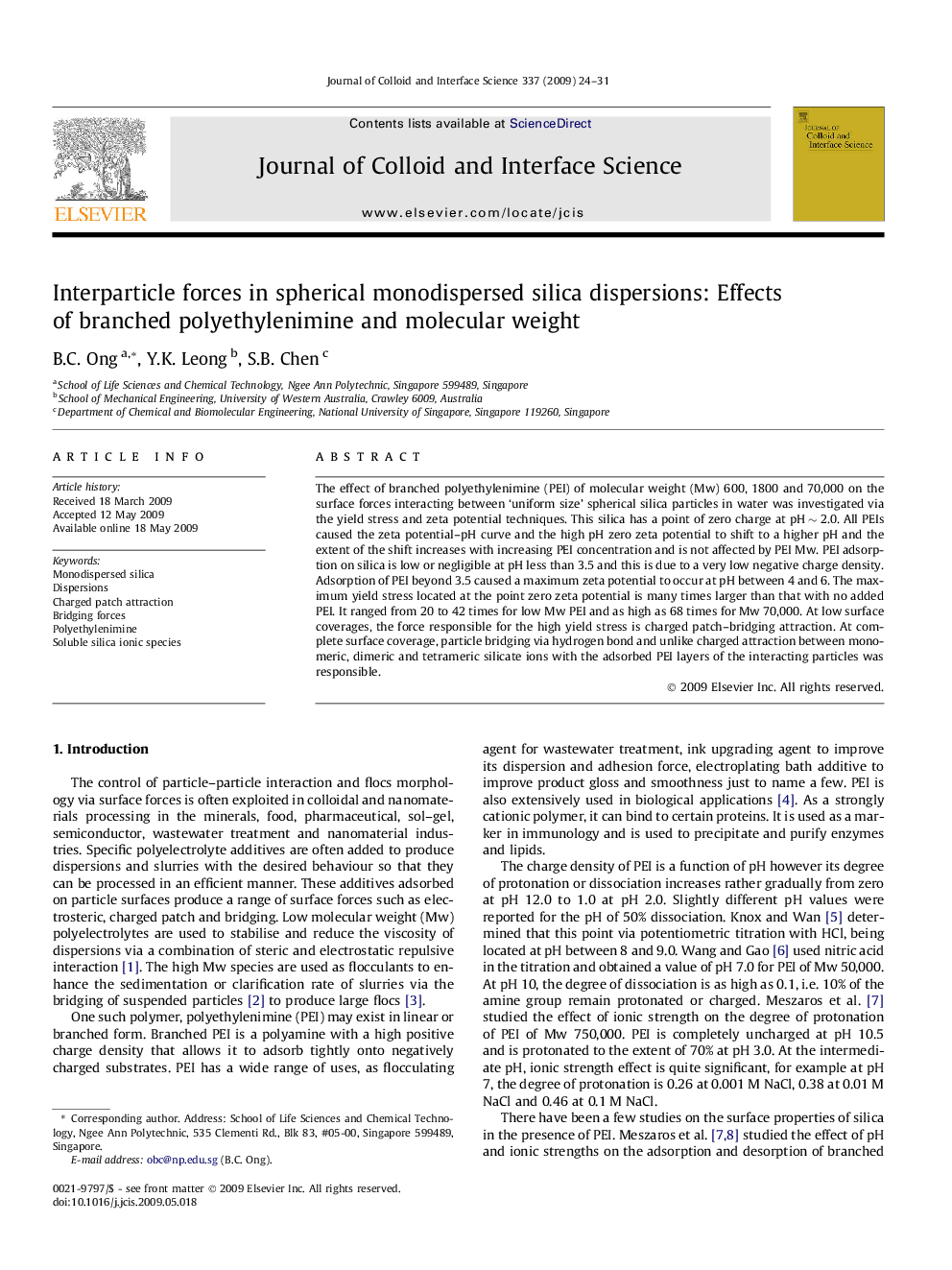| Article ID | Journal | Published Year | Pages | File Type |
|---|---|---|---|---|
| 610654 | Journal of Colloid and Interface Science | 2009 | 8 Pages |
The effect of branched polyethylenimine (PEI) of molecular weight (Mw) 600, 1800 and 70,000 on the surface forces interacting between ‘uniform size’ spherical silica particles in water was investigated via the yield stress and zeta potential techniques. This silica has a point of zero charge at pH ∼ 2.0. All PEIs caused the zeta potential–pH curve and the high pH zero zeta potential to shift to a higher pH and the extent of the shift increases with increasing PEI concentration and is not affected by PEI Mw. PEI adsorption on silica is low or negligible at pH less than 3.5 and this is due to a very low negative charge density. Adsorption of PEI beyond 3.5 caused a maximum zeta potential to occur at pH between 4 and 6. The maximum yield stress located at the point zero zeta potential is many times larger than that with no added PEI. It ranged from 20 to 42 times for low Mw PEI and as high as 68 times for Mw 70,000. At low surface coverages, the force responsible for the high yield stress is charged patch–bridging attraction. At complete surface coverage, particle bridging via hydrogen bond and unlike charged attraction between monomeric, dimeric and tetrameric silicate ions with the adsorbed PEI layers of the interacting particles was responsible.
Graphical abstractAdsorption of branched polyethylenimine on spherical silica dispersions resulted in the large increase in the yield stress of the dispersion.Figure optionsDownload full-size imageDownload high-quality image (73 K)Download as PowerPoint slide
